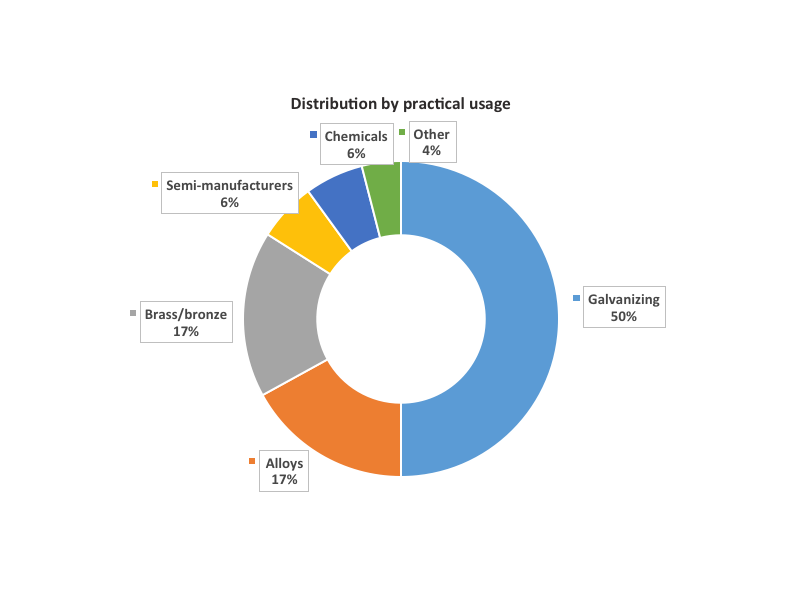Zinc
Zinc is a fragile metal of blue-white color, lying in the earth's crust, the forth widely used metal after iron, aluminum and copper. It is used as a rule for galvanizing steel and protecting metals from unwanted corrosion.. Zinc alloys, including brass, have a wide range of applications. As far as physical characteristics are concerned, zinc is a fragile metal, but at high temperatures it becomes quite flexible.
A little more abundant than copper, zinc makes up an average of 65 grams (2.3 ounces) of every ton of Earth’s crust. However zinc appeared much later than other metals in history. There is some evidence that the Greeks knew of the existence of zinc and called it "false silver," but they had no method of producing it in quantity. The Romans as early as 200 BC produced considerable quantities of brass, an alloy of zinc and copper, by heating in crucibles a mixture of zinc oxide and charcoal covered with lumps of metallic copper.
Physical characteristics and application of zinc:


Zinc production
In 2019, global zinc production amounted to 11.8 million tons, which is 1.3% more than in the same period in 2018. This growth was provided by an increase in zinc production in Australia to 1.2 million tons (+ 17%), Canada - up to 311 thousand tons (+ 20%) and Africa - up to 468 thousand tons (+ 21%).
In China, production increased by 1.3% to 3.99 million tons, but some factors such as environmental restrictions and high rates for processing zinc concentrate, which reduce the profit of mining companies, hold back the country from a significant expansion of production.
One of the main peculiarities of the zinc market is that the proportion of reserves do not correlate with the mining activity in the region. On the graphs below you may see the difference.

* source Government of Canada
Zinc quotation
At the end of 2019, the average cost of zinc at LME decreased by 24%, to $ 2,009 per tonne compared to 2018. In the 4th quarter In 2019, quotes were highly volatile. The metal price rose to $ 2,600 per ton against the background of low metal reserves in LME's warehouses and expectations of the conclusion of the "first phase" of a trade deal between the US and China. The positive effect on zinc price was caused by suspension of Vedanta's zinc production in Namibia (90 thousand tons of zinc in concentrate) and the closure of the Nyrstar zinc mine in Canada (24 thousand tons of zinc in concentrate).
Starting in mid-November 2019, zinc quotes began to decline, which was facilitated by factors such as an increase in the supply of metal on the world market and possible difficulties in trade negotiations between the United States and China.

